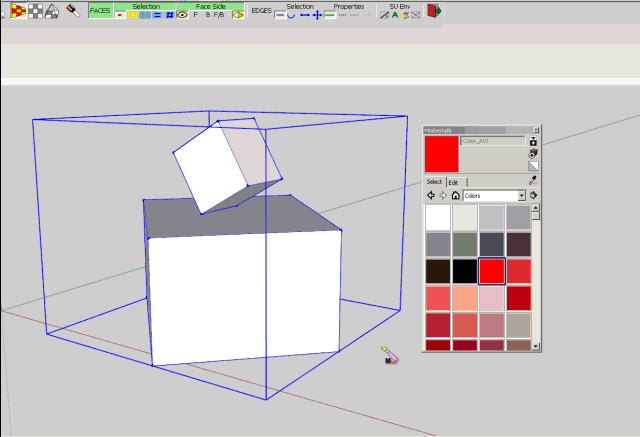Coloring a Component
-
I have a multiple house walls all tied together as a component, a vary complex model with multiple layers. I want to color different faces of the walls different colors, but since they are all one component, when I can only color them as one color I select. Without exploding the component is the a way to color the various faces different colors?
FYI I cannot explode the walls, as it is a .3ds file for export as a print file to a Zcorp printer, and it does not layer out right in the build.
Thanks, Brian
-
Hi Brian,
When you have a component (or a group), you can manipulate it in two, different ways;
- "From outside" - when anything that you do (paint, scale, mirror etc.) will affect the whole component instance (i.e. not the definition)
- and by entering its editing context (say double click on it or right click > edit) when you can access whatever is "inside" (e.g. faces) and can manipulate things individually there - this will change the component definitionhowever - i.e. every inserted instance of the same component will change accordingly.
If you want to avoid this (changing each instance - if you have more instances of the component in the model at all), you will first need to right click > make unique and start editing then.
-
The second method Csaba describes is probably the best way. Open the component for editing and apply the various materials to the faces.
If your practice has been to explode components so you can modify them, you've been creating a lot of extra work for yourself. Simply open the component by either double clicking on it with the Select tool or right click on it and choose Edit Component. when you are finished editing you can either click in space with the Select tool or with nothing in the component selected, right click and choose Close Component.
-
Thanks, I appreciate your help, I got it figured out. Brian
-
The other thing is that if the component has groups or components nested within and they have been individually colored, a global recolor will not affect them. They must be addressed at the local level, I believe. You can, and should until you are comfortable and maybe even almost always experiment: copy, make unique, undo, etc..
-
Once you get the hang of it, it's really quite useful. As you can see, you can burrow down to raw geometry and paint individual faces...or you can paint the entire component with a single click.
The thing to remember is that directly painted faces take precedence over a group or component paint. You can think of them acting as a gloss coat to the component paint's undercoat. The undercoat will show through in areas that you haven't face-painted.
In the case of the attached file, all the parts common to all of the cars have been face-painted...wheels, windows, lights etc. Therefore they stay the same when the component is duplicated. The bodywork, however, was left the default face colour. This allows you to then component-paint each vehicle any colour you like, with a single click, without affecting the 'overcoated' individual faces.
SketchUp allows you to component-paint the same component in different colours, without having to make each instance unique. You would have to make each instance unique if you intended to face paint them, however (ie. in component edit mode)...as changes to one would affect all the others.

-
Soon to be released is my ThruPaint plugin that can paint across the boundaries of Components and Groups (as its name indicates).
You can paint face by face or by surfaceHere is a small illustration
Fredo

-
ThruPaint looks very useful, of course. Perhaps PaintThru? And don't forget PaintThru For Dummies.
Advertisement







